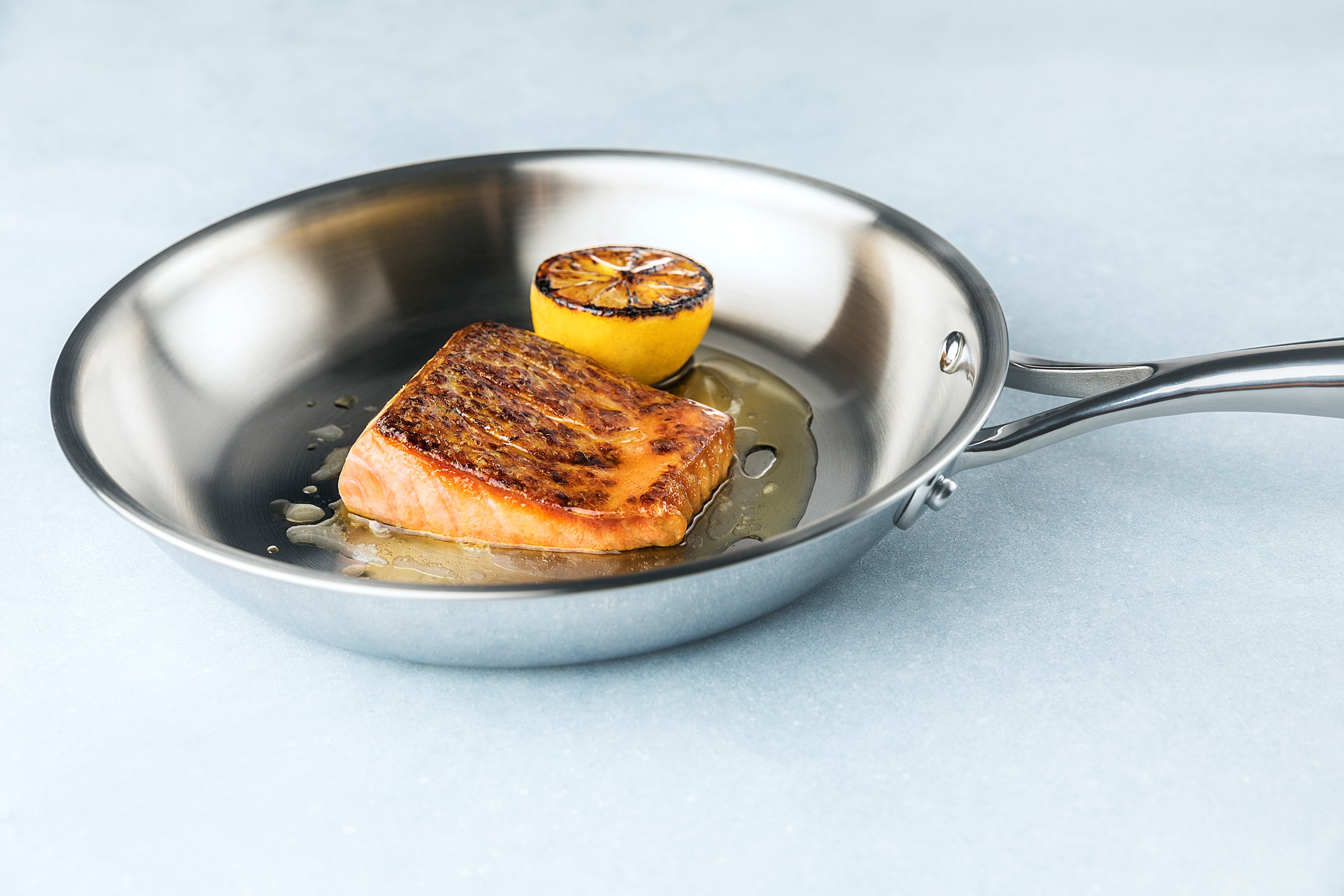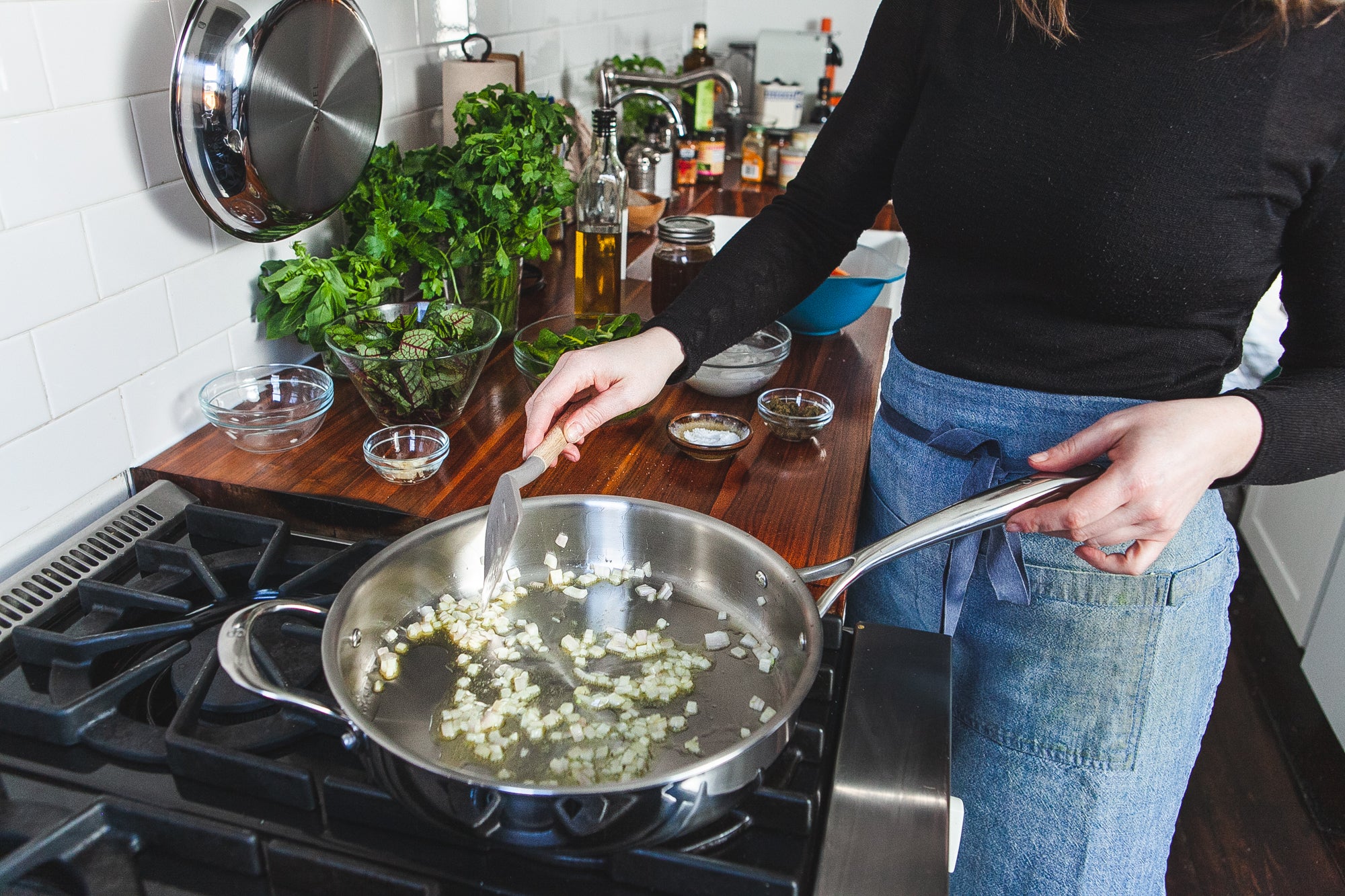
The Best Pans for Cooking Fish
Learn what tool is best for your fish-cooking needs
Fish can be a delicate thing - which is why so many home cooks struggle with how to best cook it. But when you have the right tool for the job, cooking fish isn’t too complicated and can be one of the great joys of at-home cooking. In this article, we address one of the most common questions we hear from home cooks: what are the best pans for cooking fish.
For Perfectly Seared Fish: A Stainless Steel Skillet

Our favorite way to prepare fish is to sear it in a stainless steel skillet and finish it with a pan sauce. A high-quality stainless steel skillet is the perfect tool for this technique. Because it heats quickly and evenly, without those troublesome hot spots, this pan will allow you to sear fish like a pro and achieve restaurant-quality crispy skin on your fish. This technique works well for fish like salmon and snapper, which you can pair with a simple lemon butter pan sauce and impress the whole family.
Shop Stainless Steel CookwareFor Last-Minute, No-Fuss Cooking: A Non-Stick Skillet

If you’re looking for an easy way to prepare fish without having to worry much about your cooking technique, a non-stick skillet is the way to go. A high-quality non-stick skillet will allow you to get a quality sear on your fish, while still making it easy enough to flip the fish without having to stress about it getting stuck to the pan and ruining dinner. A high-quality non-stick skillet is a good pan for cooking fish varieties that are more delicate and thus more prone to breaking apart when stuck to a pan. Plus, this type of pan is easy to clean.
Shop Non-Stick CookwareFor Endless Versatility: A Sauté Pan

A stainless steel sauté pan with vertical sidewallsis one of the most versatile pans for cooking fish. These vertical sidewalls make it perfect for shallow frying, such as when cooking things like fish and chips or crispy fish tacos, or for braising fish, such as when cooking fish low-and-slow in a braising liquid of your choice. It’s also perfect for pan roasting (assuming it’s a high-quality oven-safe sauté pan), such as when cooking thicker cuts of fish like swordfish, which you can first sear in a sauté pan and finish in the oven. You can also use the sauté pan to simply pan sear your fish filet in place of a more traditional slanted-side skillet. In short, a sauté pan is one of the more versatile pans for cooking fish, which is why we recommend it as a must-have kitchen tool.
Shop Sauté PanFor A More Versatile Alternative to Cast Iron: A Carbon Steel Skillet

A carbon steel skillet is a great option if you’re looking for a pan to cook fish, particularly if your recipe calls for pan searing. Carbon steel skillets heat up quickly and stay hot, allowing you to sear with confidence. What’s more, when properly seasoned, a carbon steel skillet develops a slick non-stick surface, which means you won’t have to stress about a more delicate cut of fish sticking to the pan. For anyone who loves to sear in cast iron, a carbon steel skillet is a great alternative (plus, it’s much lighter than cast iron!).
Shop Carbon Steel Cookware
Tips for Pan-Searing Fish
We think pan searing is one of the best ways to prepare fish. It takes some practice to master - and so it’s satisfying when you pull off a restaurant-quality sear.
Here are some tips to keep in mind when pan searing a fish filet.
- Before searing, it’s important to pat dry the fish filet with a paper towel. Too much moisture causes steam, which prevents good browning. Patting the fish filet dry on all sides helps ensure a high-quality sear and crispy skin.
- Use an oil with a high smoke point. We like avocado oil.
- Carefully place the fish in the pan skin-side down - and then let it be. Most of the cooking of the fish should occur on the skin side.
- Once the skin is seared, it will naturally release from the pan, making it easy to flip to the skinless side without having to worry about it sticking.
- We suggest finishing with a pan sauce




